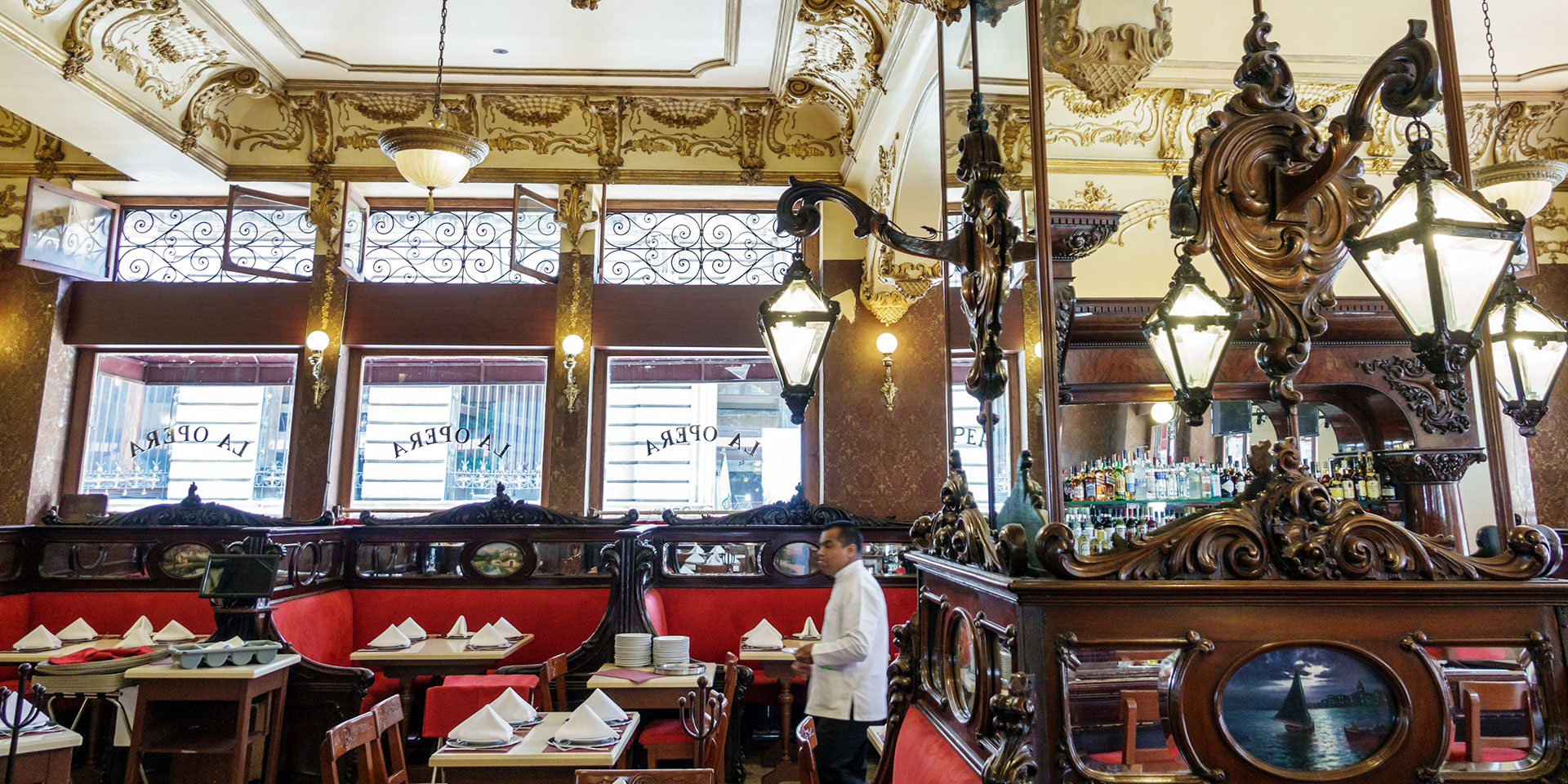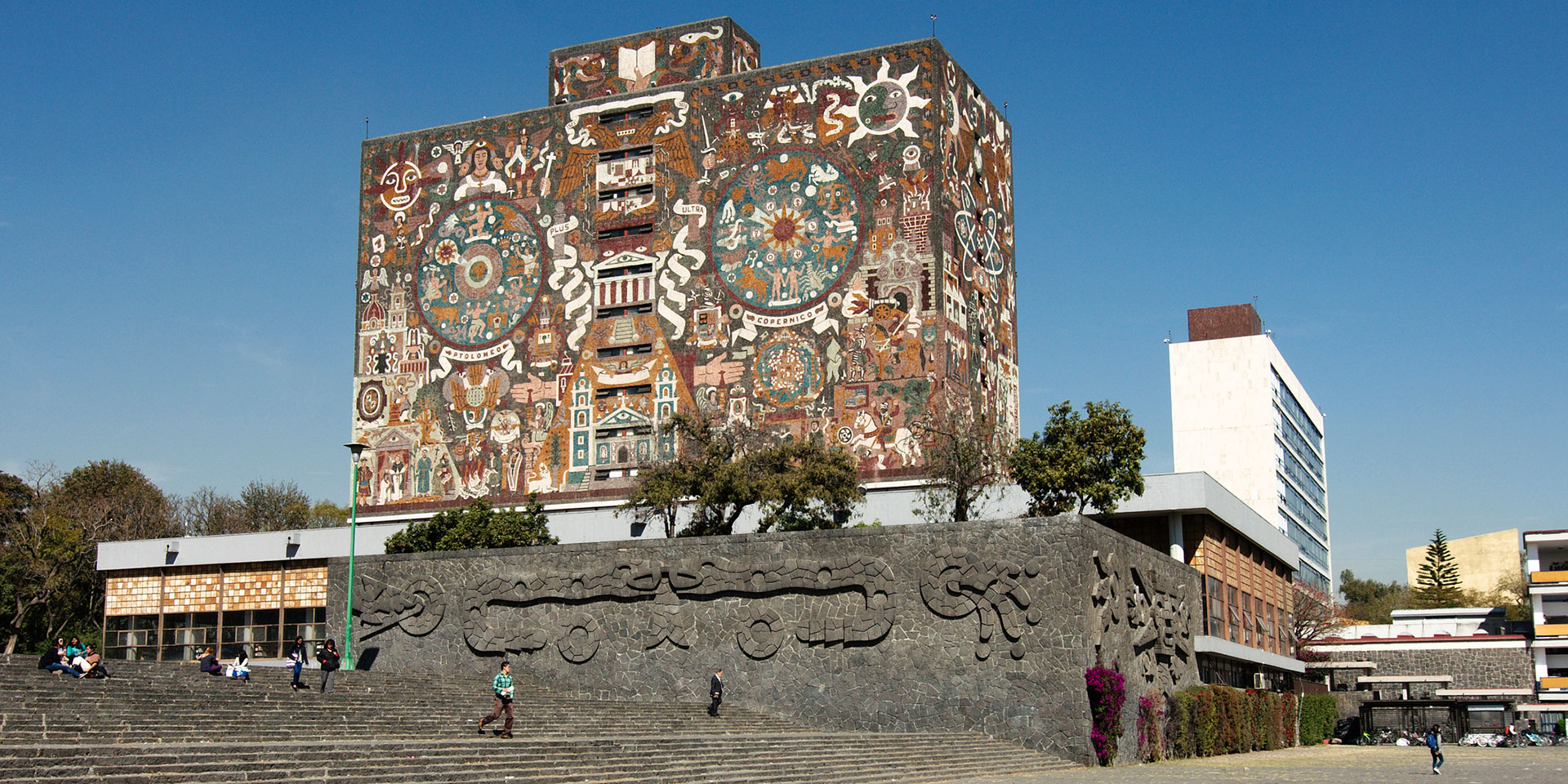Mexico City has an amazing array of museums and galleries where you can learn more about the lives of the creative and revolutionary minds that shaped its culture. You can wander through Frida Kahlo’s home, The Blue House, which displays both art and the accoutrement of her life, or visit the halls of the Diego Rivera Mural Museum at Bellas Artes.
Once you’ve fallen in love with these personalities, why not get a view of the city through their eyes? Follow along to tour some of the favorite hangouts of the famous couple, and other historical figures who lived in or frequented Mexico City, like Octavio Paz, Che Guevara, Juan Rulfo, and William Burroughs.
Café La Habana
It is rumored that from this cafe in Cuauhtémoc, Che Guevara and Fidel Castro planned the Cuban revolution.
Still serving coffee and classic Mexican food after all these years, you can visit this spot first thing in the morning, in the wee hours of the night, or anywhere in between, to get a feel for the lives of the long list of famous journalists, novelists, and poets who have graced this diner’s stools.
Viveros de Coyoacán
First founded at the turn of the 20th century, this massive park and garden was created as a nursery to help reforest the Mexico City region.
It opened to the public in 1936 and is now a popular spot for running, walking, picnics, clandestine kisses, bird-spotting, and of course people-watching. This part of CDMX was Frida Kahlo’s childhood home and the place where she returned to all throughout her life.
Enjoy a bit of nature in the heart of the city, and imagine Kahlo sitting under some of these same trees.
The National Autonomous University of Mexico (UNAM) Public Library
The school, which has seen the likes of some of Mexico’s most famous faces, was where poet Octavio Paz had his education between 1932 and 1937. The campus has been designated a UNESCO World Heritage site, an oft-overlooked historic area preserving its majesty, and the library is one of the most beautiful buildings.
You can’t miss the massive mural painted by Juan O’Gorman, an homage to Mexican history which covers all four sides of the library building. Afterwards, wander the campus to see the other murals which grace its walls, by artists Francisco Eppens Helguera, José Chávez Morado, David Alfaro Siqueiros, and Diego Rivera.
Bar la Ópera

This cantina is one of the oldest and most well-known in the city, with a reputation for housing working writers as they create their masterpieces. Past bar patrons include Mexican Juan Rulfo, Colombian García Márquez, and Argentinian Julio Cortázar.
Writers and aspiring novelists visiting the city for inspiration won’t be out of place bringing along a notebook and trying to bang out a few pages while you’re here.
Plaza Luis Cabrera
Many of America’s famous Beat Poets came to Mexico City’s Roma neighborhood, including Jack Kerouac, William Burroughs, and Allen Ginsberg, and this is where our tour takes a darker turn.
It was here, in a dingy apartment on a busy corner at Monterrey 122 and Chihuahua street, where Burroughs shot his wife, her death later becoming a pivotal scene in his book Naked Lunch.
A few blocks away at Jose Alvarado 37, what was Cerrada de Medellín 37 in 1949, you can find Burroughs’ first home in the city, where he lived with Kerouac. Nearby at Orizaba 210, which has unfortunately since been demolished, is where Burroughs wrote most of Queer, and where Kerouac penned much of Mexico City Blues.
For a taste of the drug-fueled writers life, visit cafe-lined park Plaza Luis Cabrera, where the men frequently visited while high on cannabis, morphine, or hallucinogenic drugs.
Panteón Americano
If you wish instead to pay your respects to the woman who lost her life at Burroughs’ hand, you will have to visit the Panteón Americano, in the north of the city near the Tacuba metro station.
Here, at the very back, where the forgotten poor are left when families cannot pay for their graves, you will find the small niche (Joan Vollmer Burroughs, Loudonville, New York, 1923, Mexico D.F. Sept. 1951) — this grave, the only mark left behind by Burroughs and his contemporaries.




